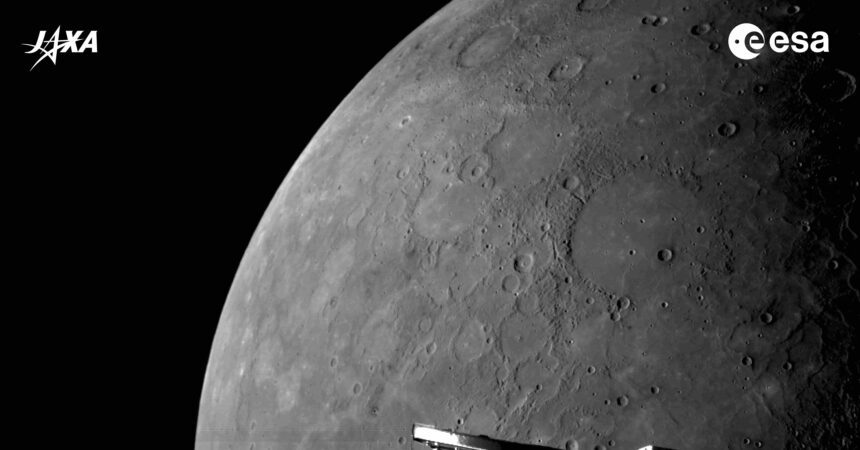Exploring Mercury: The BepiColombo Mission Breaks New Ground
On January 8, 2024, the BepiColombo spacecraft made headlines as it successfully completed its sixth flyby of Mercury, the closest planet to the Sun and an enduring subject of fascination for astronomers and scientists alike. This critical maneuver, known as a "gravity assist," utilized Mercury’s gravitational pull to adjust the spacecraft’s trajectory, paving the way for its eventual orbital insertion around the planet by the end of 2026. This blog post will delve into the significance of the BepiColombo mission, the technology behind it, and what we can expect in the future as we edge closer to unlocking the mysteries of Mercury.
A Joint Adventure: ESA and JAXA
BepiColombo is a collaborative venture between the European Space Agency (ESA) and the Japan Aerospace Exploration Agency (JAXA). Launched in October 2018, this ambitious mission aims to enhance our understanding of Mercury’s composition, geological history, and magnetic field. The mission comprises two separate but interconnected probes: ESA’s Mercury Planetary Orbiter (MPO) and JAXA’s Mercury Magnetospheric Orbiter (MMO). Each probe is designed to conduct specialized scientific observations that will ultimately provide a comprehensive overview of the planet.
The Role of Gravity Assist
The recent flyby was not merely an opportunistic encounter; it was a meticulously planned maneuver aimed at altering BepiColombo’s course using the planet’s gravitational strength. Gravity assist maneuvers are a common technique utilized in space exploration to conserve fuel and optimize the spacecraft’s trajectory—allowing it to reach distant destinations with greater efficiency. During this flyby, images captured by BepiColombo revealed insights about Mercury’s surface features and geophysical characteristics, setting the stage for further investigation.
What’s Next for BepiColombo?
Following the flybys, the BepiColombo spacecraft will experience a series of additional gravitational assists—primarily using Earth and Venus—before ultimately entering Mercury’s orbit. Once it arrives, the two probes will separate, initiating their dedicated missions to observe different facets of the planet. The MPO will focus on surface composition and geological processes, while the MMO will investigate Mercury’s magnetic field and its interaction with solar wind. This split allows for a 360-degree assessment of the planet, addressing questions surrounding its formation, geological history, and potential for water ice in its craters.
Scientific Objectives
The scientific objectives of the BepiColombo mission are ambitious. Researchers are keen to discover whether Mercury harbors water in the form of ice within its craters, particularly those that reside in permanent shadow. Understanding how Mercury was formed and assessing its geological activity will provide crucial data not only about the planet itself but also about the early solar system and the conditions that led to the formation of terrestrial planets.
Captivating Imagery
Until the probes commence their scientific endeavors in early 2027, data gathered during each flyby—including stunning images—will continue to unravel Mercury’s enigma. The most recent photographs captured during the sixth flyby offer glimpses of its rugged terrain, craters, and surface variations, providing astronomers with invaluable visual data.
The Significance of Exploring Mercury
Mercury’s extreme environment and unique geological make-up render it a critical subject for study. Unlike other planets in the solar system, it has a thin atmosphere, large temperature fluctuations, and a magnetic field that can reveal the planet’s inner workings. Insights drawn from the BepiColombo mission will not only illuminate Mercury’s own secrets but also enhance our understanding of planetary formation processes applicable to other celestial bodies.
Conclusion
As we await the outcomes of the BepiColombo mission, it is essential to recognize the groundbreaking efforts being undertaken by ESA and JAXA. This mission not only represents a major scientific endeavor but also serves as a testament to international collaboration in exploring the cosmos. With each flyby and subsequently collected data, we draw closer to uncovering the mysteries of Mercury—an often-overlooked planetary neighbor that holds secrets from the dawn of our solar system. Stay tuned for updates as BepiColombo continues its journey, paving the way for a transformative understanding of the innermost planet.










